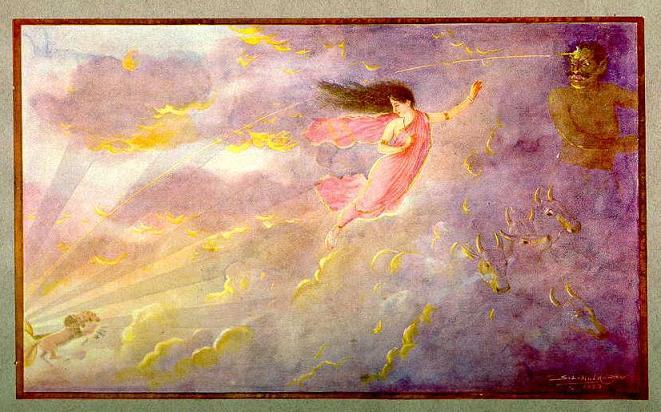srigurubhyO namahA
We now have the 112st mantrA - which is the closing mantrA of the pAyiram or the introductory verses. In this section, the sage has dealt extensively with the idea of siva consciousness; the spiritual paramparA or lineage to which this text belongs; the reason behind the birth of this path; the virtue and spiritual merit of the AgamAs; the place and identity of the trimUrthy / trinity.
All of this sets the ground for what the sage has in mind - the true transmission of knowledge. The rest of the text is divided into nine tantrAs, each of them containing a vast treasure trove of Agamic wisdom. The sage slowly guides us like a true guru guides his disciples, compassionately and with great clarity. So, here we are, the last mantrA of the pAyiram.
தானொரு கூறு சதாசிவன் எம்மிறை
வானொரு கூறு மருவியும் அங்குளான்
கோனொரு கூறுஉடல் உள்நின்று உயிர்க்கின்ற
தானொரு கூறு சலமய னாமே. 10.9.112.
Siva Is Jeeva
In one Part, He, Sadasiva my Lord;
One heavenly Part in Heaven resides;
One Kingly Part, the spirit that the body heaves;
One His Part to all motion transformed.10.9.112.
Com -In one Part, He, Sadasiva my Lord; My Lord sadAsivA is one part of the supreme principle known as paramasiva (refer mantrA 111) One heavenly Part in Heaven resides; who abiding in the AkAshA (ether) principle pervades all tattvAs and remains also transcendent to the tattvAs at the same time. One Kingly Part, the spirit that the body heaves; The same siva resides in the body as prAnA (life current), the king (of the body). One His Part to all motion transformed. Yet another aspect/ part of this siva is in the form of spandA (vibration).
# In this mantra, which is the last of both this sub section and of the entire pAyiram or introduction section of the thirumandiram, the sage introduces us to the idea of spandA. First, the sage states that the manifestation known as sadAsiva is but a modification of the supreme paramasiva tattvA. This same principle, when pervading the AkAshA or ether principle (which is the first evolute among the bhUtAs or the elements) can be understood to be pervading all tattvAs – as the AkAshA aspect is evident in all other modifications as this is the first medium for the establishment of the worlds. This same lord of AkAshA, when within the confines of the body (sthUlA or elemental/gross/physical body) is manifest as the prAnA or life principle.
The term prAnA should be taken to mean the ten variants – the five main prAnAs : prAna, apAna, udAna, vyAna and samAna; and also the five subsidiary prAnAs : nAga, kUrma, kirukara, dEvadatta and dhananjaya. The life principle prAnA and its variants are responsible for the birth and continuity of life in the physical or gross body. Those readers who are interested to know more about the ten prAnAs and their activities, please refer to the hata yOga pradIpikA or similar texts. Thus, we have that the siva is manifest as prAnA in the body, enabling it to continue living.
The term ‘spandA’ which can be understood as vibration or motion is a very important one. It forms the core of the Kashmir shaivism or the trikA siddhAntA. The sage does not at this juncture dwell on the greater meanings of that vibration here, so I will also refrain from a detailed description of the same right now. In the main body of the text however, we will see much more of this and then in the appropriate context I will provide more details. Here, it will suffice to note that the sage mentions that another important aspect of siva is in the form of spandA or vibration/ motion (within the body). The birth of the spandA is in itself an indication of spiritual advancement in the seeker and an indicator that the sAdhakA is proceeding in the right direction.
From the above mantra it becomes clear that, the One supreme paramasiva is Himself sadAsiva and as sadAsiva He is the guide and friend to the jIvAs and is the only remedy for the disease of samsArA or entanglement in the cycle of birth and death.
This marks the end of the pAyiram or introduction phase of the text. From the next mantra, we proceed to the teachings. The First TantrA starts with the subsection titled ‘upadEshA’/ initiation.
thirucchitrambalam

0 comments:
Post a Comment